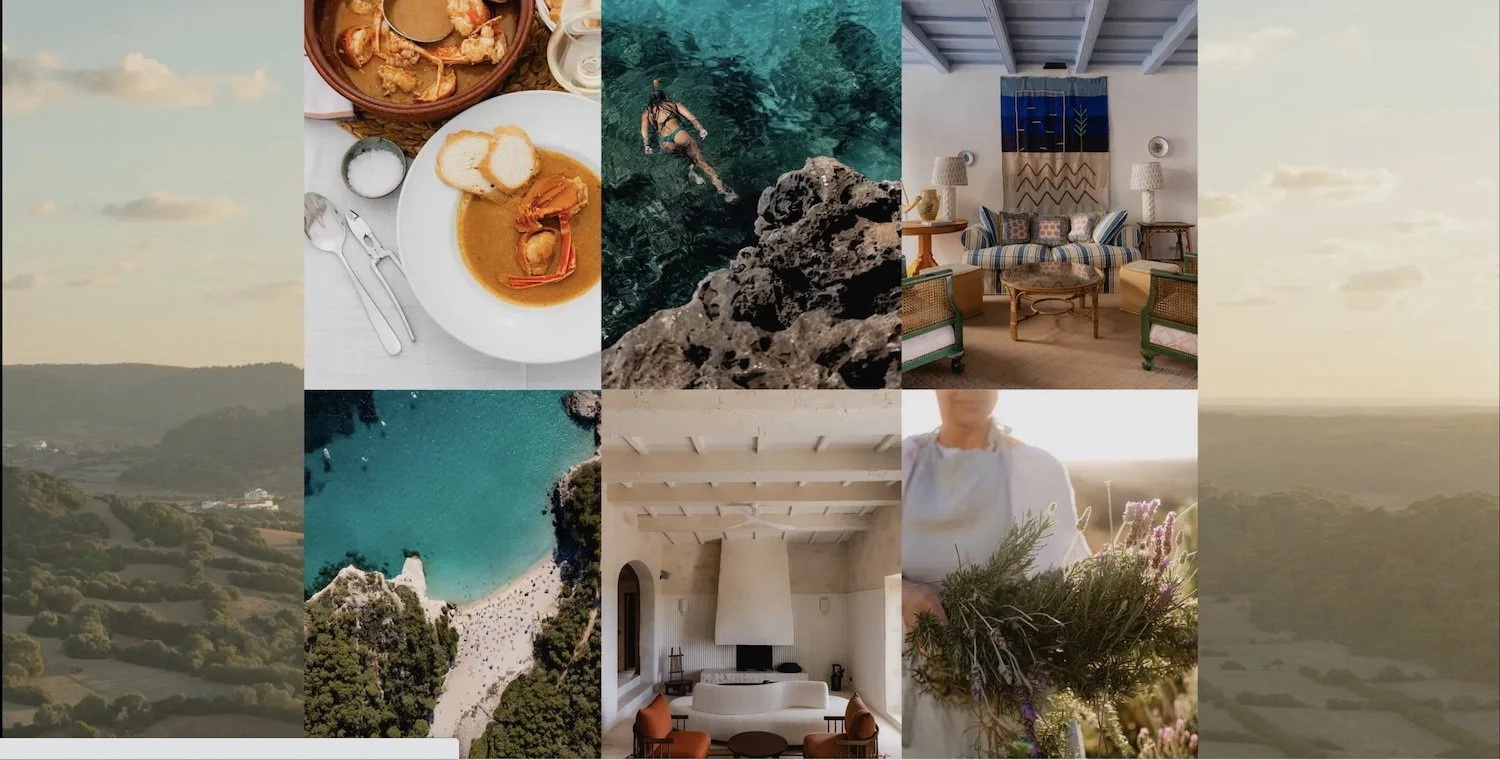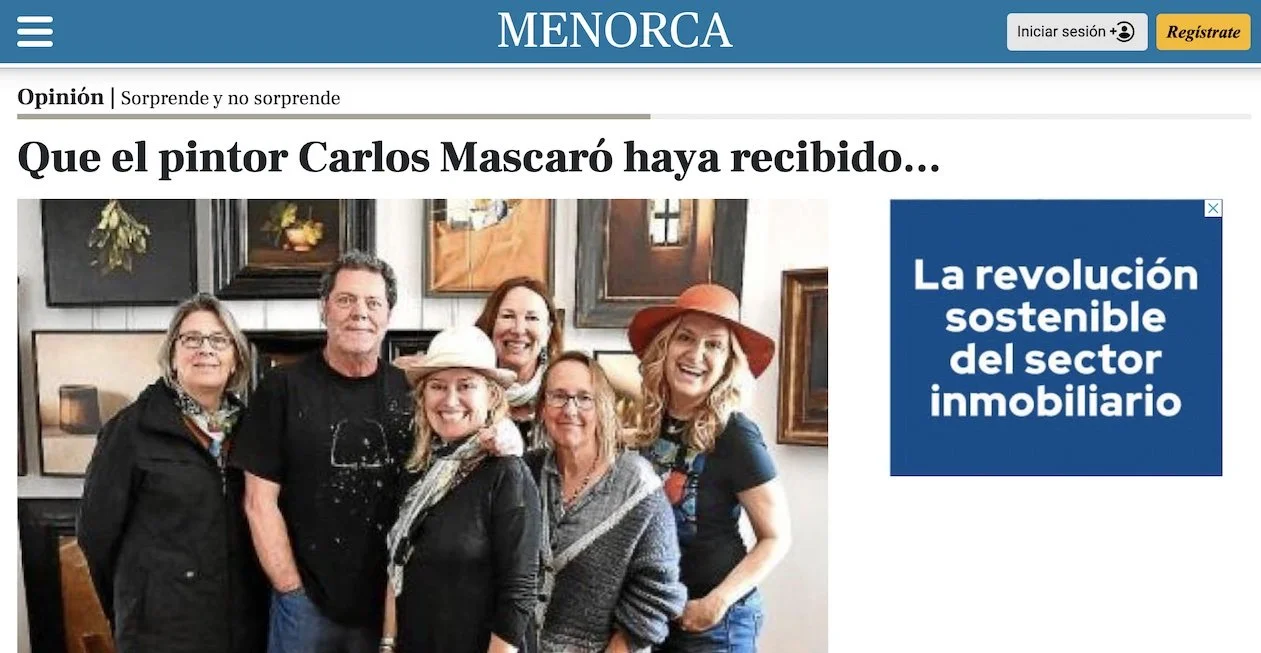Menorca in the News
Ses Sucreres in Menorca, Spain, by Calderon-Folch Studio
Featured in the 2025 issue of Interior Design magazine
Photo by Jose Hevia
Ca Ses Sucreres, the island’s grocery shop where, in the 1940’s, village children would get sweets (the name derives from sucre, Catalan for sugar), has been reenvisioned and expanded—from 4,800 square feet to 9,200, plus another 3,200 of courtyards, with the annexing of two adjoining buildings—into a 12-key boutique hotel in Menorca, Spain, by this firm specializing in passive architecture. Traditional—and local—Menorcan marés, or sandstone, clads the exterior, while interiors skew more brutalist, with a ribbed-slab ceiling of reinforced concrete, its formwork poured in situ, terrazzo flooring, lime stucco walls, and such contemporary furniture as Jacques Deneef’s N701 sofa from Ethnicraft.
Tranquility Breeds Creativity on the Quaint Island of Menorca
Quiet Menorca has long captivated artists, enchanting them with its dramatic skies and picturesque villages. Today, the island is still up to its old tricks, but it's found a new audience.
May 23, 2023
featured in the May issue of Conde Nast’s Traveler
photo above courtesy of Conde Nast Traveler
the inlet at Alcaufar, Menorca
“It's easy to be deceived by Menorca, a quaint pastoral island of rinsed blues and Celtic greens that was declared a biosphere reserve by UNESCO in 1993. Its pastures are filled with cattle and wheat and punctuated with whitewashed windmills. The Romans christened it Insula Minor, Lesser Island, as if forever bequeathing it plain-Jane status next to Ibiza and Mallorca, its alluring Balearic sisters. And yet the world has always landed on its shores. Over the course of a millennium, it passed from the Arabs to the Aragonese to the Brits, who left behind their gin habit and contributed a smattering of words to Menorquí, the Catalan dialect of sa's and es's spoken, in whistling gusts, only on this island. For years it has attracted primarily British holiday-goers seeking its sharp and reliable sun, shallow blue waters, and earlier nights.”
Art world moves in on the laid-back Balearic islands
With Hauser & Wirth's outpost on Menorca, new Ibiza gallery Can Garita and CAN Art Ibiza fair, the bohemian location is attracting art buyers
In 2021, Hauser & Wirth opened an outpost on Menorca, an island with a population of just 96,000 but an annual tourist turnover of 1.4 million people. Housed in an 18th-century repurposed naval hospital, Hauser’s 1,500 sq. m art centre is not so much a white cube as it is an oasis of art. The space pays homage to the most quintessential parts of the Balearic spirit: gastronomic pursuits nestled within a kind of hippie laid-backness. The gallery space is surrounded by a series of lush gardens designed by Piet Oudolf.
Clicking the image below will open a PDF of the article, or you can use the button below the image to access the complete article on The Art Newspaper’s website.
Painter Carlos Mascaró and Our Artist Group
I arranged a studio tour with local artist Carlos Mascaro, well known for his exacting painterly style. We enjoyed a leisurely conversation about process and studio work, and were delighted to learn that we were featured in the island’s newspaper!
Prehistoric Sites of Talayotic Menorca named 2023 UNESCO World Heritage Site
Photo by Mary Presser, one of the artists in our first cohort
We visited several of these sites in our 2023 retreat, and now UNESCO has recognized them with a World Heritage designation. “Located on the island of Menorca in the western Mediterranean Sea, these archaeological sites are situated in agro-pastoral landscapes. A testimony to the occupation of the island by prehistoric communities, these sites display a diversity of prehistoric settlements and burial places. The materials, forms and locations of structures dating from the Bronze Age (1600 BCE) to the Late Iron Age (123 BCE) show the evolution of a “cyclopean” architecture built with very large blocks of stone. Astronomical orientations and visual interconnections between prehistoric structures indicate networks with possible cosmological meanings.”
Please link through to the UNESCO site for more information!
Description is available under license CC-BY-SA IGO 3.0





